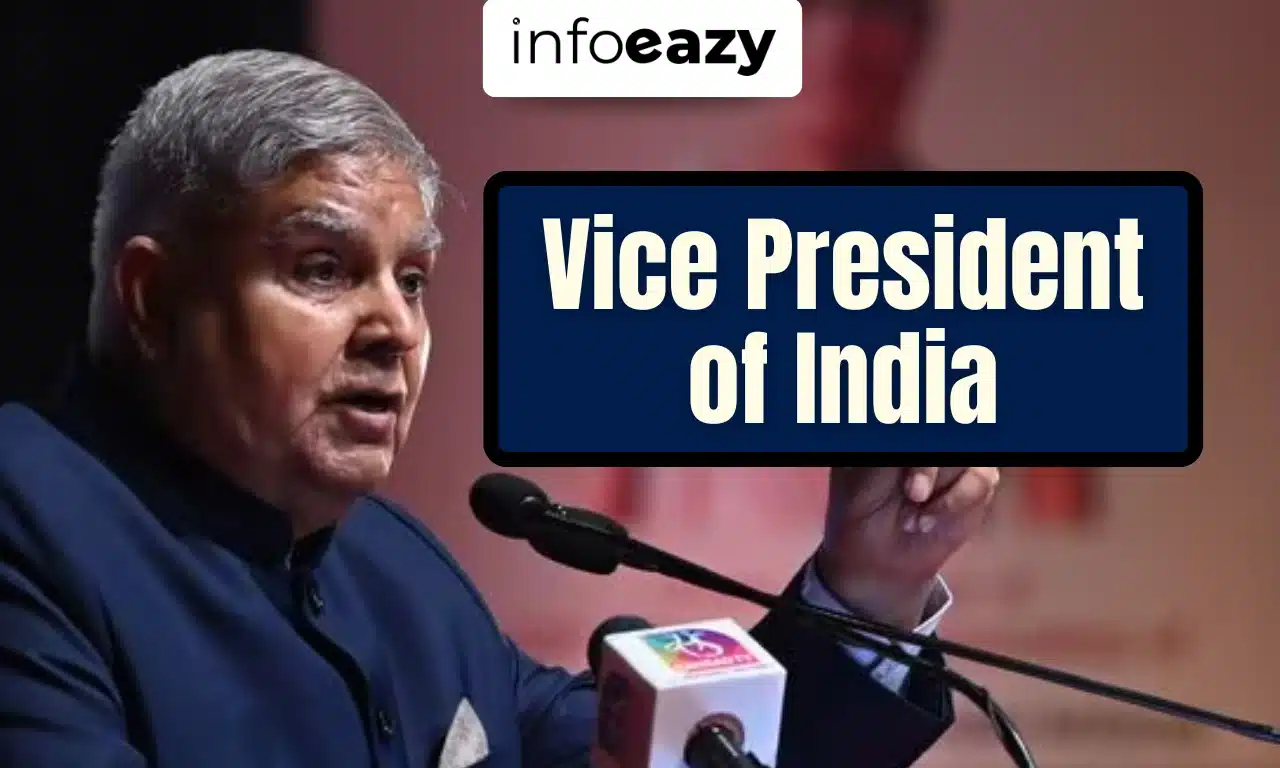Warning: Undefined variable $post in /var/www/html/wp-content/themes/generatepress_child/live_news.php on line 351
Warning: Attempt to read property "ID" on null in /var/www/html/wp-content/themes/generatepress_child/live_news.php on line 351
Warning: Undefined variable $post in /var/www/html/wp-content/themes/generatepress_child/live_news.php on line 352
Warning: Attempt to read property "ID" on null in /var/www/html/wp-content/themes/generatepress_child/live_news.php on line 352
On 21st July 2025, Jagdeep Dhankhar shocked the nation by resigning from his position as the Vice President of India. His decision came two years before completing his five-year constitutional term. In his resignation letter addressed to the President, he cited health issues as the primary reason for stepping down.
Dhankhar stated that he was prioritizing medical advice and ongoing treatment, which restricted his ability to continue fulfilling his constitutional duties. His resignation took effect immediately.
Constitutional Provisions Related to Vice President of India
The office of the Vice President of India is governed by specific provisions laid out in the Indian Constitution. These articles define the election process, eligibility, term, powers, and removal procedures related to the Vice President.
| Constitutional Provisions Related to Vice President of India | |
| Article | Provision |
| Article 63 | There shall be a Vice President of India. |
| Article 64 | The Vice President shall be the ex-officio Chairman of the Council of States (Rajya Sabha). |
| Article 65 | The Vice President acts as President in the absence of the President. |
| Article 66 | Election of the Vice President by an electoral college. |
| Article 67 | Term of office and procedure for resignation or removal. |
| Article 68 | Time of election to fill vacancy in the office of Vice President. |
| Article 69 | Oath or affirmation by the Vice President before entering office. |
| Article 70 | Parliament may make provisions for the Vice President to discharge presidential functions in certain contingencies. |
Election of Vice President of India
The election of the Vice President is governed by Article 66 of the Indian Constitution. It is an indirect election carried out by an electoral college consisting of members of both Houses of Parliament, including nominated members.
The election is conducted using the proportional representation system with a single transferable vote, and voting is done via a secret ballot.
Important Points:
- Electoral College: All MPs from Lok Sabha & Rajya Sabha (including nominated)
- Voting Method: Proportional representation with a single transferable vote
- Supervising Authority: Election Commission of India
- Term: 5 years or until a successor assumes office
Qualifications for Vice President of India
To contest the election for Vice President, a person must satisfy certain constitutional requirements. These are outlined in Article 66(3) of the Constitution of India.
Key features:
- Must be a citizen of India
- Must be at least 35 years of age
- Should be eligible to become a member of Rajya Sabha
- Must not hold any office of profit
- Must not be a sitting member of Parliament or State Legislature (if elected, must resign)
Term of Office of the Vice President of India
The Vice President is elected for a term of 5 years, but this is not fixed. He/she can resign earlier, be removed, or even continue beyond five years until a new Vice President is elected and takes over.
As per Article 67, the Vice President may resign by submitting a letter to the President or be removed by a resolution passed by both Houses of Parliament.
Key Points:
- Normal Term: 5 years
- Early Termination: By resignation, removal, or death
- Extension: Can continue until the successor assumes charge
- Re-election: Allowed for unlimited terms
Impeachment Procedure of Vice President of India
The term impeachment is not used for the Vice President. Instead, the Vice President can be removed through a resolution as per Article 67(b) of the Constitution.
The procedure is less complex than the President’s impeachment. The Rajya Sabha must pass a resolution by an effective majority, followed by the Lok Sabha with a simple majority.
Steps for Removal:
- 14 days’ notice must be given
- Rajya Sabha passes resolution by an effective majority
- Lok Sabha agrees to the resolution with a simple majority
- The Vice President is removed from office
Note: The Vice President of India is not allowed to preside over the Rajya Sabha during discussions or voting related to their own removal. In such cases, the Deputy Chairman or any other member appointed by the House takes over the proceedings.
Powers and Functions of Vice President of India
The Vice President of India primarily functions as the ex-officio Chairman of the Rajya Sabha, overseeing its proceedings and maintaining order. Additionally, the Vice President assumes the role of Acting President during the President’s absence or vacancy.
- Ex-Officio Chairman of Rajya Sabha
- The Vice President is the ex-officio Chairperson of the Rajya Sabha (Council of States).
- Presides over all sessions of the Rajya Sabha and ensures its smooth functioning.
- Maintains order and decorum during debates and proceedings.
- Decides on the admissibility of questions, motions, and resolutions.
- Casting Vote in Rajya Sabha
- In case of a tie during voting in the Rajya Sabha, the Vice President exercises a casting vote.
- This vote helps in breaking the deadlock and finalizing decisions on bills or motions.
- No Executive Powers
- Unlike the President, the Vice President does not hold any executive powers.
- The role is primarily legislative and ceremonial, except when acting as President.
- Acts as President of India
- When the office of the President is vacant due to resignation, removal, death, or otherwise, the Vice President acts as the President.
- Also discharges presidential duties temporarily when the President is unable to perform due to illness or absence from India.
- While acting as President, the Vice President enjoys all powers and privileges of the President.
- Represents the Rajya Sabha in Various Forums
- Represents the Upper House in joint parliamentary committees, formal state functions, and international events.
- Plays a key role in parliamentary diplomacy and delegation meetings.
- Role in Parliamentary Committees
- Nominates members to select committees of the Rajya Sabha.
- Plays an important administrative role in constituting committees and overseeing their formation.
- Upholds Constitutional Provisions
- Ensures that all Rajya Sabha procedures conform to the rules of procedure and conduct of business.
- Protects the rights and privileges of the members and the dignity of the House.
Vice President of India FAQs
Q1. Why did Jagdeep Dhankhar resign?+
Q2. Who elects the Vice President?+
Q3. What are the qualifications to become Vice President?+
Q4. What is the tenure of the Vice President?+
Q5. What are the powers of the Vice President?+




